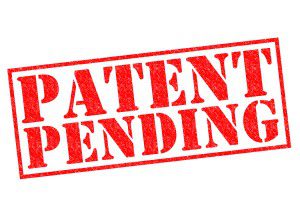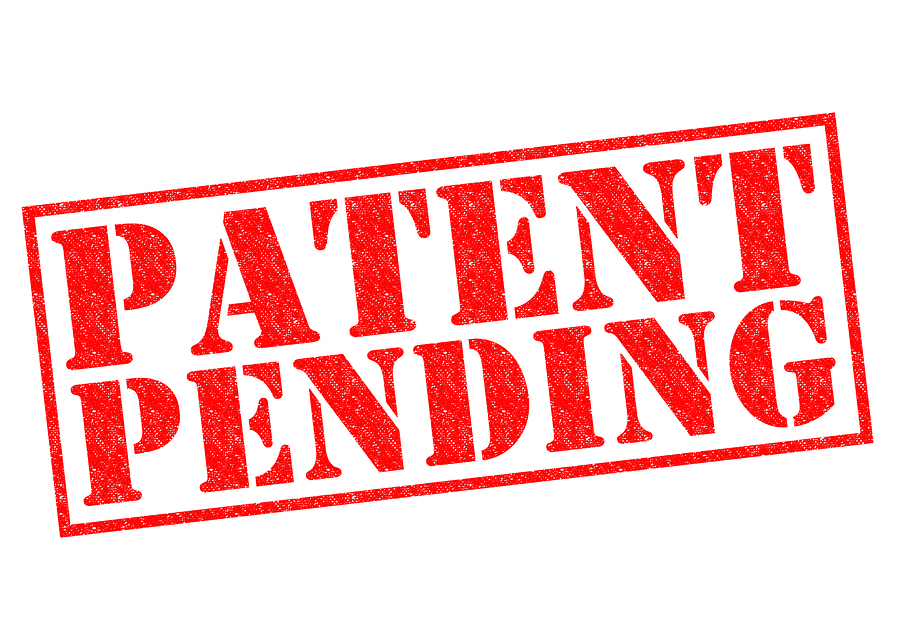- Keeping Track of Your Competitors’ Intellectual Property - January 7, 2015
- When Does Your Website Become Your Greatest Risk? - October 2, 2014
- How Long Does it Take to Get a Patent? - April 3, 2014
When people come to talk with me about patenting their inventive idea, inevitably this question arises: “How long does it take to get a patent?” When I tell them the patent approval process will probably take close to three years, their jaws drop in surprise. “Really, it’s going to take that long?” YES.
I know it is disconcerting. An innovator spends all that time and effort developing an inventive product or process, spends all that time and effort to market or license their invention, and spends all that time and effort working with an attorney to translate their invention into a patent application, at great financial cost and risk to themselves, just to have their patent application languish at the United States Patent and Trademark Office (USPTO). In this article I am going to discuss the process at the USPTO and some of their metrics (as of February 2014) to explain why patent application pendency at the USPTO is so long. So even though you may not like the long pendency, you will understand why.
The Short Answer
The USPTO is being swamped with patent applications and does not have enough examiners to process them. Also some applicants will fight the USPTO to the “bitter end” to get a patent issued through the USPTO’s various procedures. This causes an examiner to file several actions against an inventive concept, increasing the overall prosecution time, and ultimately causing the whole patent application system to back up.
The Long Answer — The Patent Approval Process
In 2012, the last year for which statistics are available, 542,815 patent applications were filed. The last several years have seen a steady rise in patent application filings, with 2005 being the last year that less than 400,000 patent applications were filed (390,733). As of February 2014 there are 7,966 patent examiners with a backlog of 604,692 patent applications to be examined. This backlog is down from September of 2011 when the backlog was over 700,000 patent applications.
The longest stretch of time for an applicant is actually waiting for their patent application to be examined initially. As of February 2014 the average pendency before the first office action is 18.1 months (down from 27 months in Oct. 2011) with an average total pendency of 28.1 months for final disposition of the patent application, i.e. an allowance or an abandonment (down from 34 months in Oct. 2011). An allowance means that the claims were accepted by the examiner and that a patent will issue from the application. An abandonment means that the applicant is no longer pursuing a patent, i.e. they give up on the application. For those that give up after the first office action, the average disposal time will average approximately 24 months (applications are abandoned if there is no response within 6 months of the mailing date of the office action). For those that choose to go on and fight after their first office action, the disposition time will be closer to the three year mark.
The final disposition rate stated above does not include prosecutions that are continued by the filing of Requests for Continued Examination (RCEs), which occurs after the second office action which is usually deemed a final office action. If an applicant wants to fight and make further arguments and/or amendments to get an allowance after a final office action on a specific application, they must file the RCE and pay the additional cost. The final disposition rate average is increased to 37.9 months when RCEs are included. Applicants may also choose to file a continuation, a divisional, or a continuation-in-part application that claims priority to an original parent application that is given a final disposition. Though these child applications are considered new applications for the USPTO timing metrics discussed above, they contribute the backlog of applications that need to be examined. One inventive concept may have several patent applications pending at the USPTO.
For those who wish to have a quicker disposition of their patent application, applicants can opt to file for Prioritized Examination. The goal for applications filed under Prioritized Examination is to have a final disposition within 12 months of prioritized status being granted. There are some restrictions for these applications. There can be no more than 4 independent claims, no more than 30 total claims and no multiple dependent claims. There is also a substantial fee – $4,000 for non-small entities, $2,000 for small entities and $1,000 for micro-entities. At this time the USPTO is limiting the total number of applications granted prioritized status to 10,000 per fiscal year. For fiscal year 2013 a total of 6872 prioritized examination requests were made, with 6333 of them granted prioritized status (14 remain pending). For fiscal year 2014 so far there are 3,774 prioritized examination requests with 2,645 of them being granted prioritized status and 986 remaining pending. The pendency for the first office action on prioritized examination applications has averaged 2.46 months with a total pendency to a final disposition on these applications averaging 6.55 months. The USPTO also has Accelerated Examination Programs, but these have very specific requirements and are too complex to go into detail here.
So if you wish to pursue getting a patent issued on your inventive concept, you need to be patient and you need to be prepared to wait!!
















I’ve been in the process of a patent for three years and three months and just got a response. And I’m afraid my lawyer doesn’t know what he’s doing. And it’s hard to understand how it’s written but it seems like whatever he did for responding that they weren’t necessary to respond to because that wasn’t rejected on that. And I have three months to give a response but it’s not a final, And states that it’s under review. How much would it cost to pay someone to read my last action response? To see if my lawyers Doing a good job.
Hi Robert,
Happy to assist you.
Could you tell me which state is your business located?
I’am going through a patent process with a firm in San Diego. I’am 71 years of age and was told that because of my age the process would only take approximately a year an a half, it is know going on 2.5 years. What can I do at the point?
Thank You for your time !!
Arthur,
I am guessing your counsel filed your application with a Petition to Make Special based on your age. All that does give your application a priority status. The goal is a shorter prosecution time, but unlike prioritized examination where you pay a hefty fee, there isn’t specific time period such that examination will conclude in a one year time. The actual length of time will depend on how many other priority applications the examiner/art unit has to deal with as well the prosecution itself. Hopefully you have received your first non-final office action, the response time from you (or your firm) and then the back and forth with the USPTO will take time. Unfortunately there is no way to speed up the process, much if depends on the examiner’s backlog.
Thank you so much for this article and willingness to answer questions! I really appreciate it.
We’re thinking about attempting to take the Prioritized Application Route and have a couple of questions.
Do you know if this route is still open as it seems the USPTO limits them every year?
What determines whether we are a non-small, a small entity or a micro entity regarding the fee?
I hope you will be able to clarify the timing of my patent application for me.
We’d like to form an LLC for our product and don’t know when we should file for the patent.
I’ve read online about the Inventor in a Patent application being the person or individual. So, if we form an LLC and one of our partners is the inventor, how does this work?
Do we file the patent first with the individual partner named as the inventor? How does the patent become part of the LLC.
I am confused!
Kelsey,
The really short answer is that patents take a really long time, so the sooner you start the better. As with other intellectual property (like a trademark registration), once awarded, it is an asset. If it is held by a partner, he/she can license, sell or gift it to the company. If the partners in the LLC are concerned about their position, the formation agreements can specify the transfer of the patent upon its award as a part of the consideration for forming the entity.
Kelsey,
Any public disclosure of your product/idea before filing a patent application can be detrimental and as it can take years to obtain an patent issuance, as John says below the sooner you start the better. When you file, you have to name the inventor and the applicant. Often times the applicant is business who was assigned the invention by the inventor. If this has not been done, then the inventor is also the applicant. The inventor can then assign (or license or one the option John discusses below) the patent rights to the company after the filing and have that recorded with the USPTO.
What if there is an existing patent and you are trying to prove that your invention is different with a new patent to avoid conflict with the existing one, could it potentially come down to a law case if I decide to go into production while it is “patent pending”?
Thanks
Hello Michael,
Thank you for your question. I believe your question deals with patent prosecution procedure. Yes. the Manual of Patent Examining Procedure allows for applicants to appeal their case to Federal Courts. However that is costly should only be done if the resulting issued patent would have high value. When you file a patent application you essentially pay for two substantive examinations by the examiner. If after the second examination, you receive a Final Rejection, you have some decisions to make. Assuming you don’t want to abandon the application, you either can file a Request for Continued Examination,you can file a Notice of Appeal to the Patent Trial and Appeals Board or you can file an appeal to the Federal Circuit based on the record. You also have the option of filing a child application (Continuation or CIP) claiming priority to your original application. You can file a child application whether or not you choose to continue prosecution on the original application, however a child application must be filed before the official abandonment of the original application (six months from the mailing date of the Final Rejection). Of course the decision on how to proceed with any prosecution strategy is fact-specfic, and needs to be evaluated in light of your business goals.
If I file for a design Patent can you at the same time apply for a Provisional to cover myself for 12 months to license my product? OR will the design patent pending cover me for licensing until issued?
Hello James,
Yes, If your invention has both ornamental features that can be protected by a design patent and utilitarian elements/functions that can be protected by a utility patent,then you can file both types of applications. Remember design patents essentially only cover the “look” of something, so it is a more narrow form of coverage. https://exitpromise.com/do-you-need-a-design-patent/ Provisional patent applications are a “one year idea holder” application submitted to the USPTO that is not examined. Within one year you must file a non-provisional application claiming priority to your provisional application. Provisional and non-provisional applications are for utility patents which give broader coverage than design patents. So if you want both ornamental features and utilitarian aspects of your invention covered when you are out trying to license your “product”, both types of applications need to be filed. Then you can try to find a licensee for the patent rights to the applications.
Chris, Thank you for your question.
Above, I discussed in a little detail Prioritized Examination, which is still an applicable program at the USPTO. I also mentioned Accelerated Examination. Accelerated Examination is granted by the USPTO from Petitions to make special. Petitions to make special can be based on the applicant’s age or health as well as: manufacture, infringement, environmental quality, energy, recombinant DNA, superconductivity materials, HIV/AIDS and cancer, countering terrorism, and biotechnology applications filed by small entities. However I feel that your question more deals with whether you can do typical business activities (getting your idea out to the public because there is such a need) before your patent is issued. Yes you can. Once you file your patent application and are patent pending, you are afforded some protection and can publicly research and develop your product, present your idea to potential investors, take your idea to potential manufacturers, sell your product, etc. However, you cannot pursue an infringer in a law suit until your patent is issued and the final claims (how your invention is legally defined) are known.
I heard there was a way to speed up the patent process. If your idea is needed or could help people live better. Is this true?